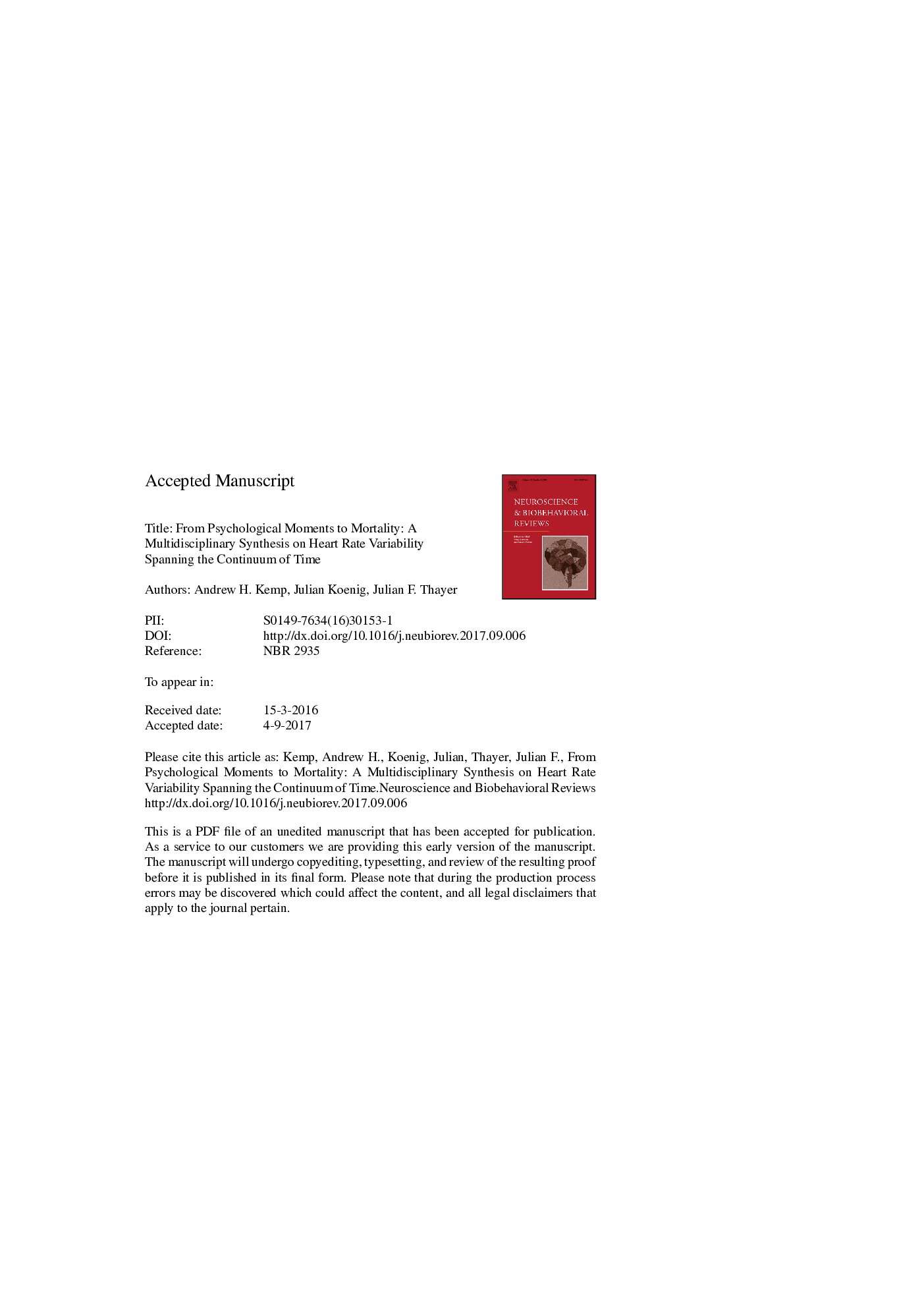| Article ID | Journal | Published Year | Pages | File Type |
|---|---|---|---|---|
| 7302432 | Neuroscience & Biobehavioral Reviews | 2017 | 65 Pages |
Abstract
Heart rate variability (HRV) indexes functioning of the vagus nerve, arguably the most important nerve in the human body. The Neurovisceral Integration Model has provided a structural framework for understanding brain-body integration, highlighting the role of the vagus in adaptation to the environment. In the present paper, we emphasise a temporal framework in which HRV may be considered a missing, structural link between psychological moments and mortality, a proposal we label as Neurovisceral Integration Across a Continuum of Time (or NIACT). This new framework places neurovisceral integration on a dimension of time, highlighting implications for lifespan development and healthy aging, and helping to bridge the gap between clearly demarcated disciplines such as psychology and epidemiology. The NIACT provides a novel framework, which conceptualizes how everyday psychological moments both affect and are affected by the vagus in ways that have long-term effects on mortality risk. We further emphasize that a longitudinal approach to understanding change in vagal function over time may yield novel scientific insights and important public health outcomes.
Keywords
Related Topics
Life Sciences
Neuroscience
Behavioral Neuroscience
Authors
Andrew H. Kemp, Julian Koenig, Julian F. Thayer,
